April 7, 2017 - Last week was an “other duties as necessary” kind of work week for LSST Graphic Designer Emily Acosta and Telescope Site Manager Eduardo Serrano. Emily traveled from Tucson to Cerro Pachón to meet a nine-member multimedia team directed by Alison Rose of Inigo Films and to coordinate with Eduardo so the media team’s work didn’t interfere with ongoing construction activities. Inigo Films was contracted to document the current state of construction via drone film footage, time-lapse sequences, panorama images, and full dome clips. The assets will be archived in LSST’s upcoming digital asset management system for project viewing and later use in Education and Public Outreach (EPO) programs.
It was important the multimedia work was accomplished safely and with minimum disruption to construction activities. Emily found herself doing a little of everything from coordinating meal schedules, to communicating with site safety managers, to shuttling people and equipment up and down the summit all the while coordinating with Eduardo and Safety Managers Sandra Romero and Giovanni Corvetto.
For five days, Alison directed components of the multimedia efforts. A four-member Santiago-based camera team gathered still photos and video footage with RED cameras, which generate images in higher resolution than HD. At night, astrophotographer Malcom Park captured photos of the Milky Way for time-lapse videos. He also employed a fisheye lens to capture spectacular whole-sky shots, which will be ideal for future planetarium presentations. Finally, a crew of three drone operators spent two days using a Freely heavy-duty Alta Drone, carrying another RED camera, to document construction activity from above.
The group had the fortunate timing to be on the summit for an important project milestone: the arrival of European Industrial Engineering (EIE), the LSST Dome vendor. With EIE joining Besalco, two contractors are simultaneously working on the summit, which makes careful coordination of everyone’s activities even more critical for safety and efficiency. Emily stayed in close contact with Eduardo, Sandra, and Giovanni to ensure the media team could safely access areas as needed to get the most effective images. Media team members followed all safety protocols and wore safety vests and hard hats while they worked in the construction zone, and securely clipped into harnesses when necessary for fall protection.
Documenting the construction process for LSST will result in valuable visual material for construction documentation and LSST’s EPO program. A big thank you to the staff at Cerro Pachón, who all pitched in to graciously host the group during this media project.
Photo credit NSF / LSST / AURA unless otherwise noted.
|
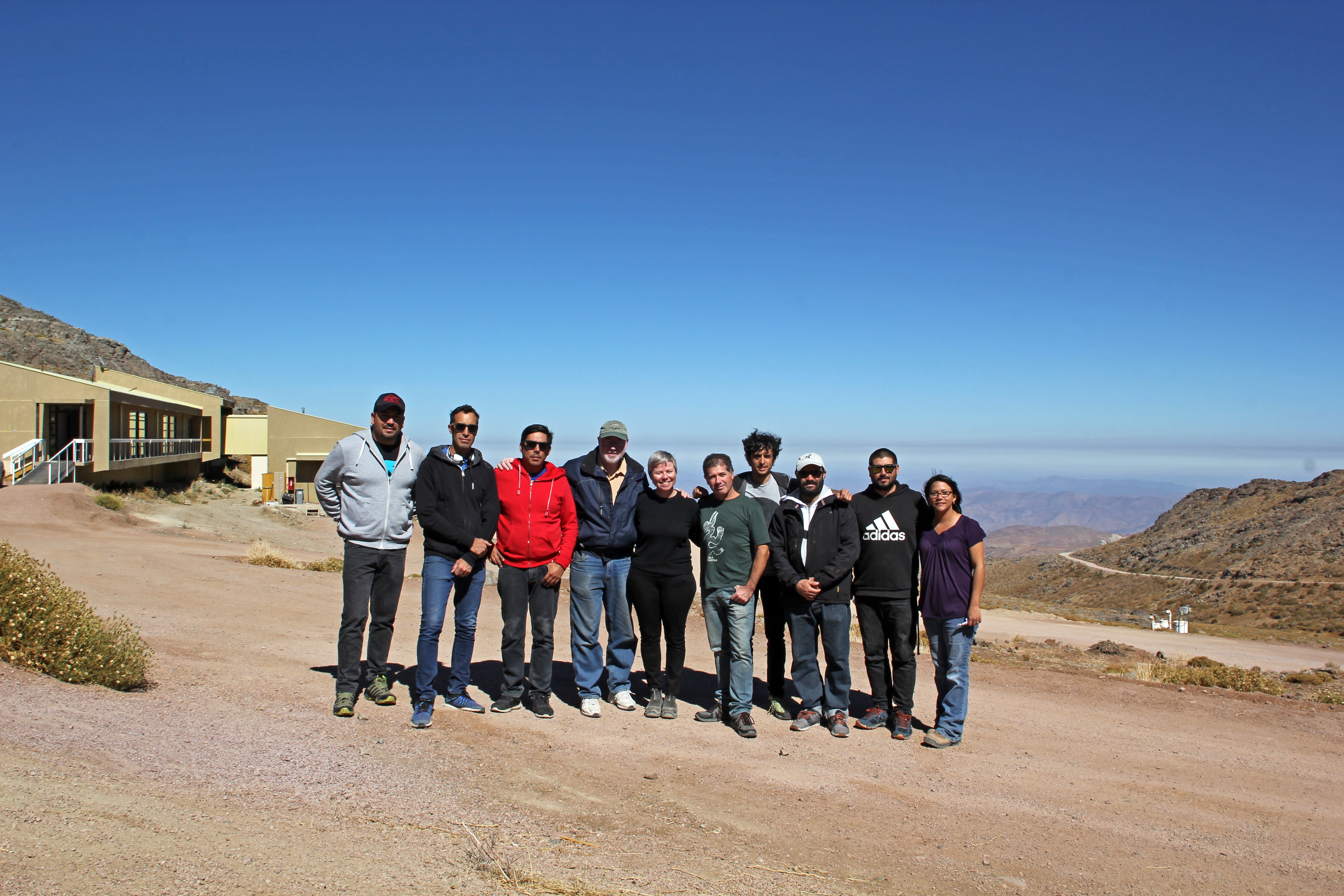
The media team, with LSST liaison Emily Acosta (R)
|
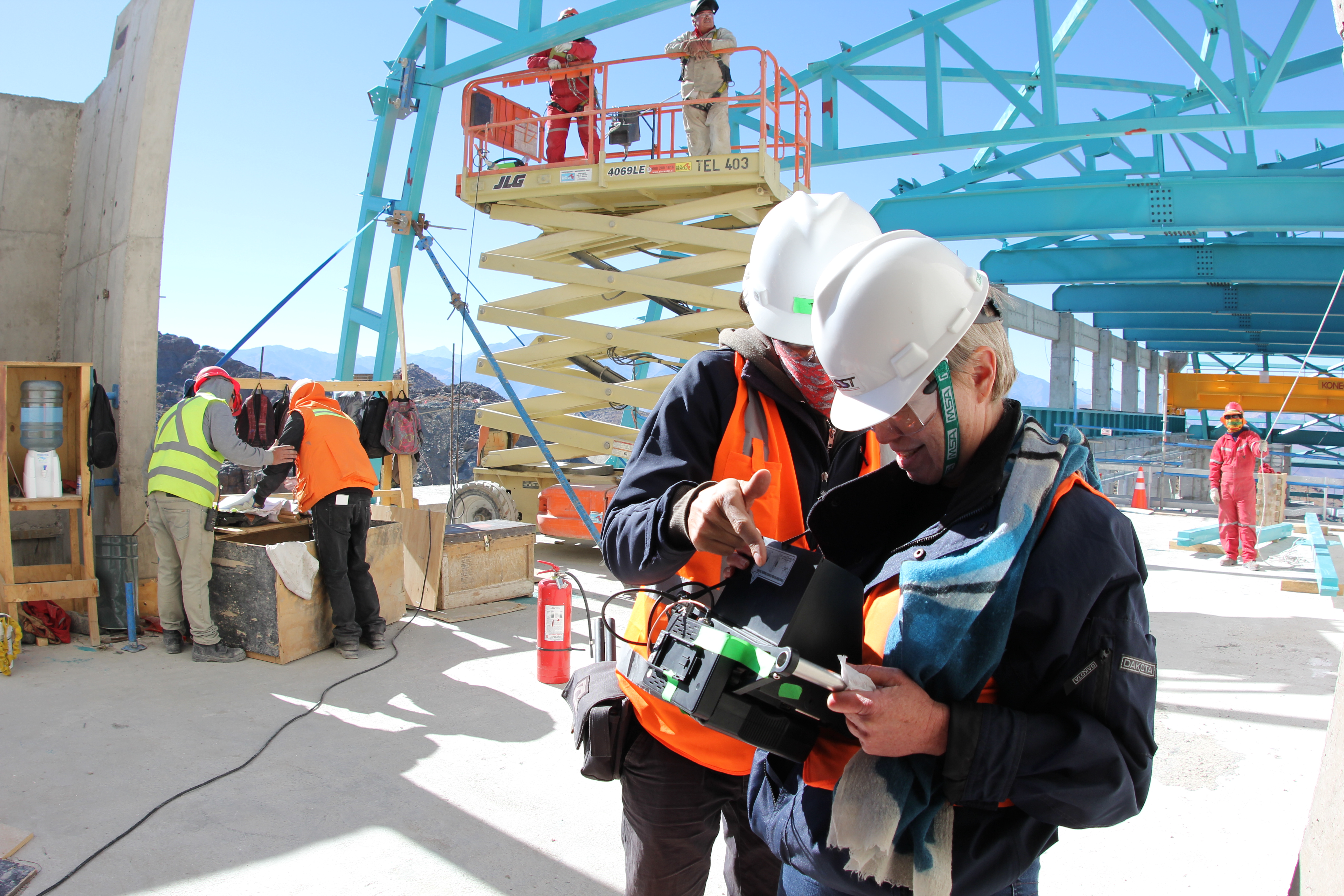
Alison reviews footage taken by the RED camera
|
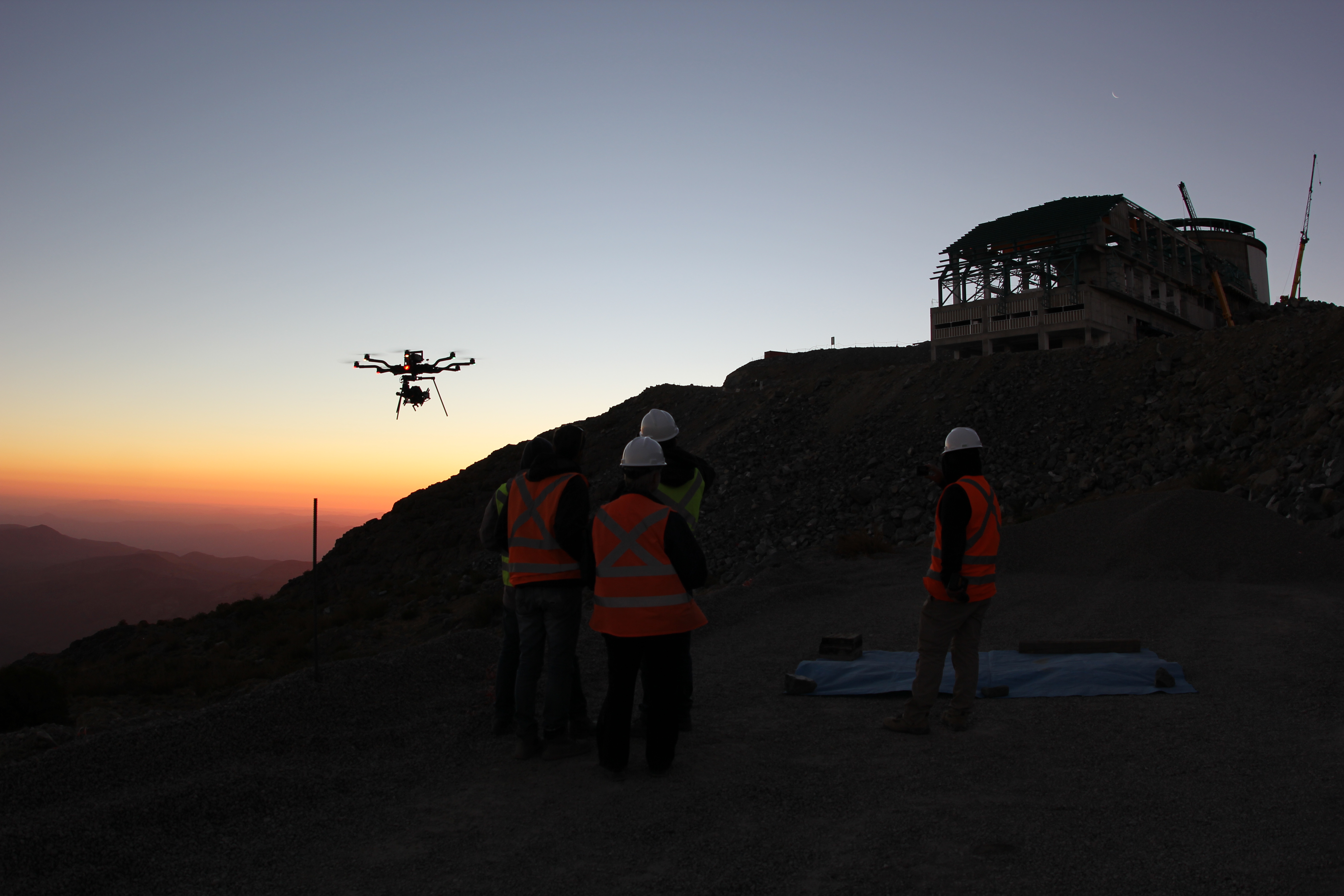
The drone flies at sunset
|
|
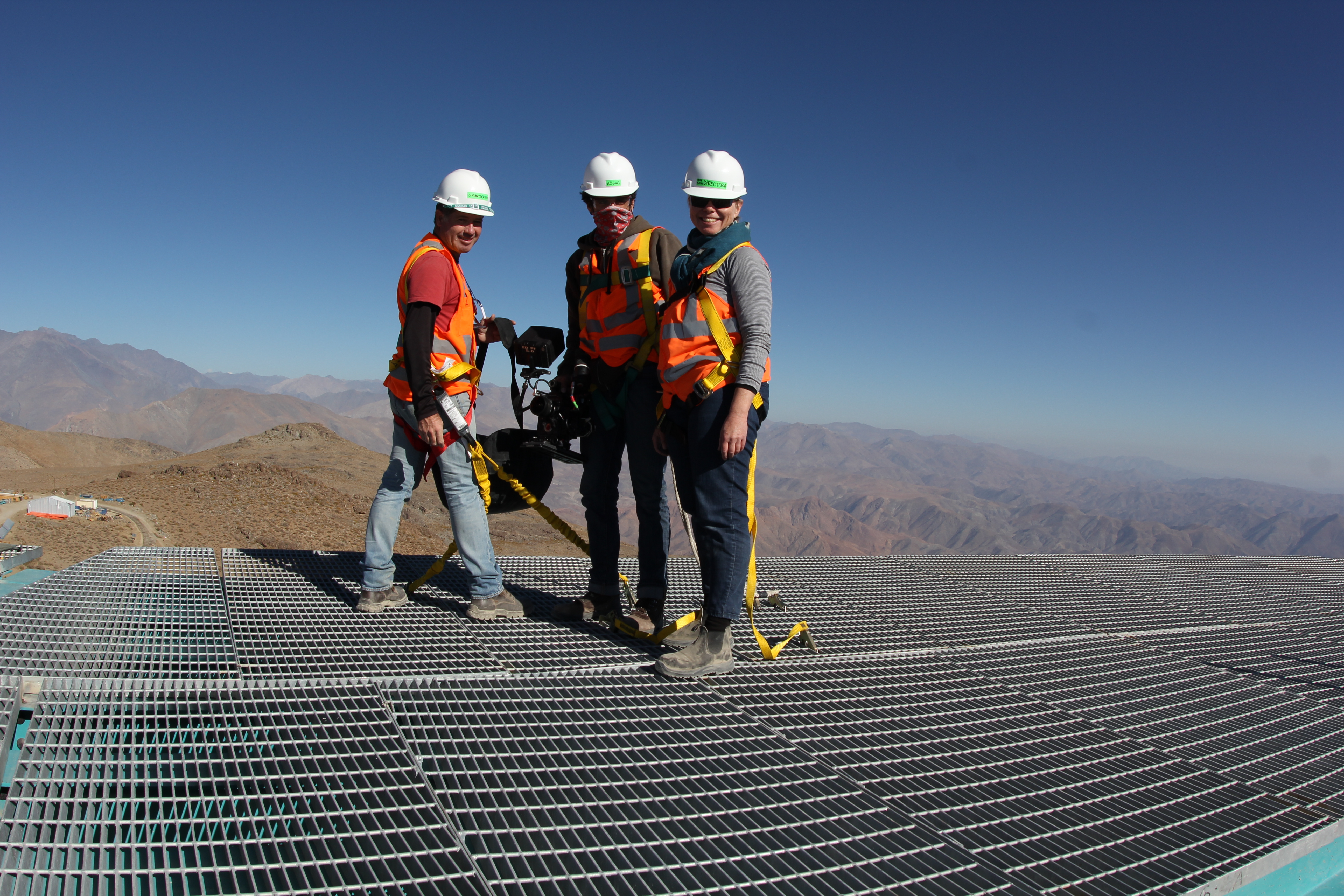
Safety first - the media team clips onto the pier
|
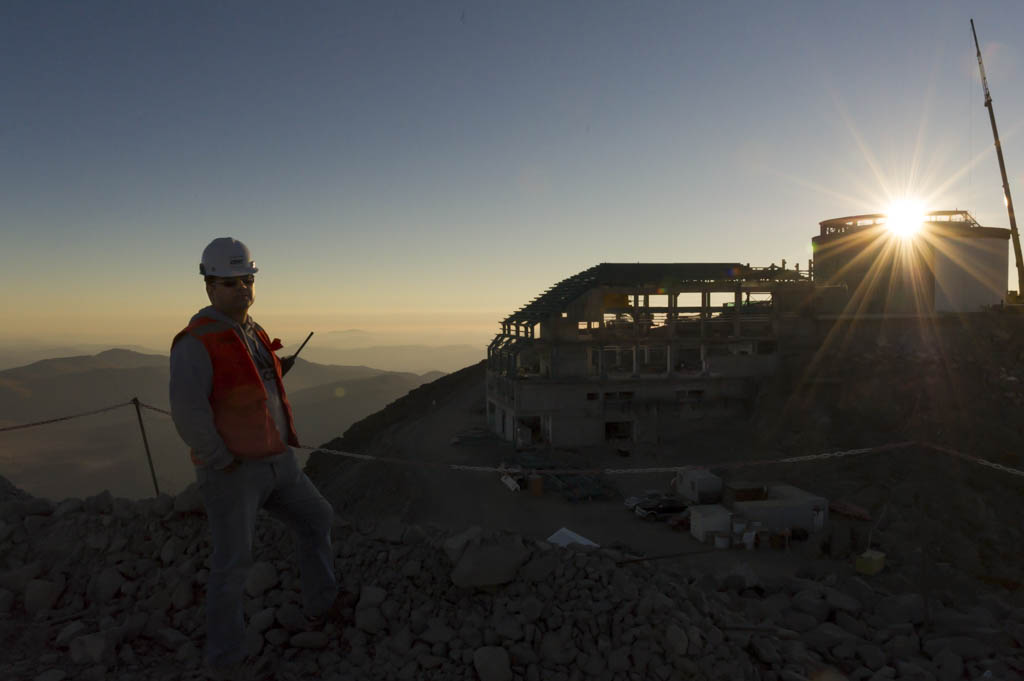
Safety Coordinator Giovanni Corvetto assists with media activities occurring after dark (photo credit: Malcolm Park)
|
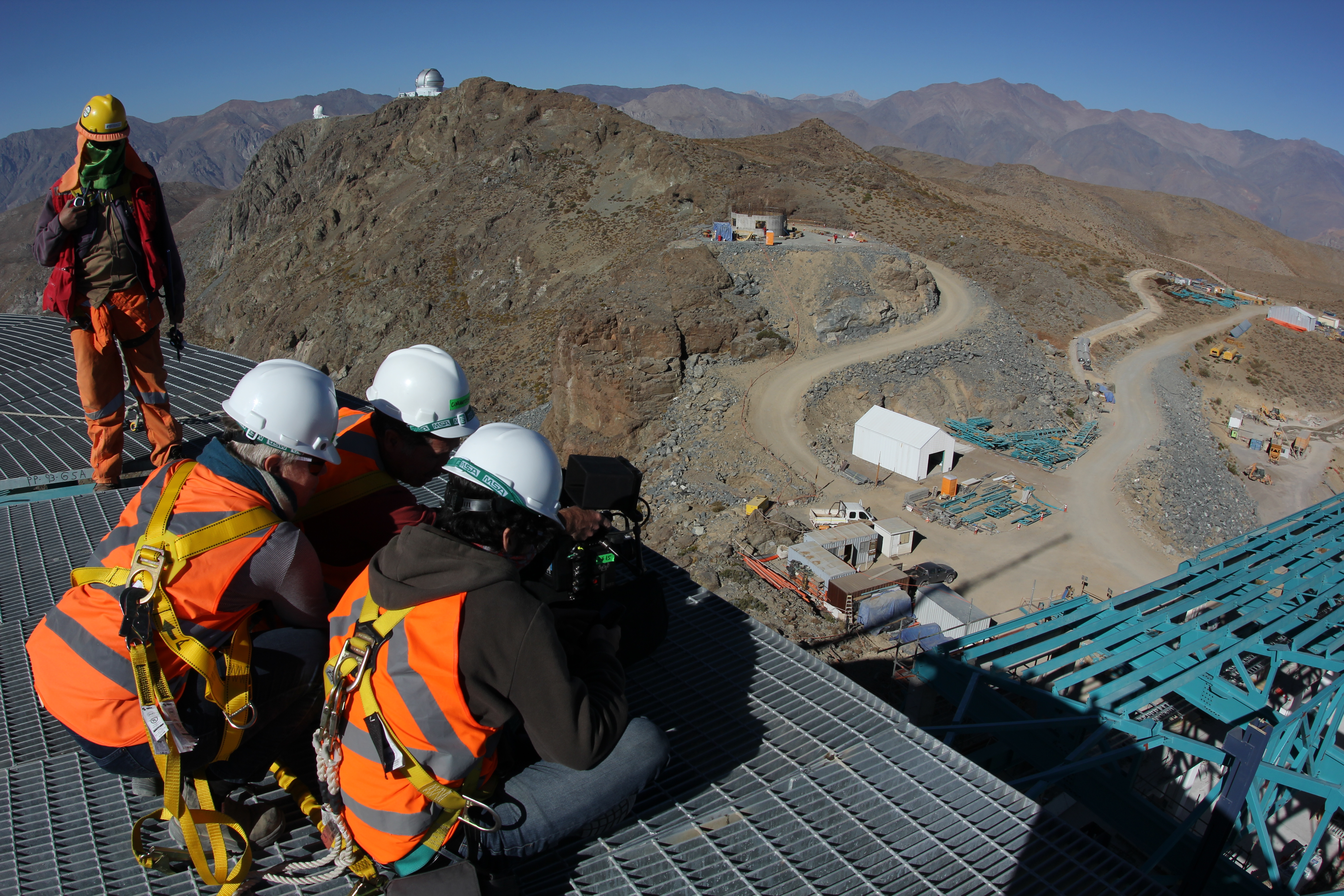
This high vantage point allows for dramatic footage of the construction site
|


